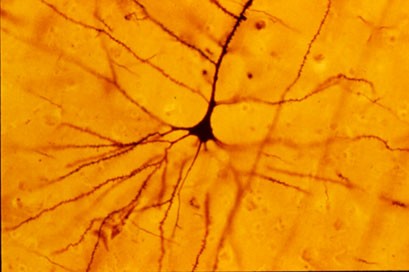- Introduction to the physiology of the perception.
- Ecological perspectives on perception.
- Introduction to the most important methods for perceptual measurements.
- Introduction to the visual system including the experience of objects and scenes.
- Motion perception.
- Colour perception.
- Sound, the hearing system and pitch perception.
- Speech perception.
- Introduction to the fields multisensory processing, and sensory substitution
DM2350 Human Perception for Information Technology 7.5 credits

Current technology relies on a variety of media to display, transmit and exchange information. Knowledge about the function, processes and limitations of the human perceptual system is crucial to enable us to make the best design choices and to optimize the relationship between information content and application. This course provides a general overview of human perception with an emphasis on vision, hearing and touch. Relevant areas of anatomy and physiology are covered as are fundamental psychophysical concepts and measures of perception such as detection, discrimination, identification and scaling. Areas of human perception to be studied in relation to information technology applications include the perception of brightness and color, sound, music, speech, haptics and the perception of space, time and motion. The fields of multisensory processing and sensory substitution are also introduced. The course also touches upon learning and perceptual change particularly related to information technology. The course has special relevance for such applications of information technology as human-machine interfaces, sound and music computing, speech-based systems, haptic interfaces, motion capture, and computer vision.
Information per course offering
Choose semester and course offering to see current information and more about the course, such as course syllabus, study period, and application information.
Information for Autumn 2026 humper programme students
- Course location
KTH Campus
- Duration
- 26 Oct 2026 - 11 Jan 2027
- Periods
Autumn 2026: P2 (7.5 hp)
- Pace of study
50%
- Application code
11139
- Form of study
Normal Daytime
- Language of instruction
English
- Course memo
- Course memo is not published
- Number of places
1 - 90
- Target group
- Only open for TIMTM and TCSCM (CSVG)
- Planned modular schedule
- [object Object]
- Schedule
- Schedule is not published
Contact
Course syllabus as PDF
Please note: all information from the Course syllabus is available on this page in an accessible format.
Course syllabus DM2350 (Spring 2019–)Content and learning outcomes
Course contents
Intended learning outcomes
The course provides the students basic theoretical and practical knowledge of the human conception with particular focus on IT. The emphasis lies on the human perception and its function and how it should take consideration to the technical applications.
On completion of the course, you should be able to:
- identify and describe the most important principles of human perception including view, movement, colour, sound, music and number
- carry out and document fundamental experiments for measurement of perception in different modalities
- identify, describe and analyse the possible perceptual strengths and the pitfalls in the design of interface for man-machine interaction
- suggest and motivate efficient models for new applications/units where human perception plays a fundamental role.
Literature and preparations
Specific prerequisites
For single course students, at least two years of studies in media and communication technology are required, computer science, informatics or the equivalent as well as the courses DD1337 Programming technique, DH1620 Human-Computer Interaction or the equivalent.
Literature
Chosen chapters from:
Goldstein, E. (2009). Sensation and Perception. Belmont, about: Wadsworth Publishing. ISBN 0495601500
Suggested reading
Weinschenk, S. M. (2011). 100 Things Every Designer Needs to Know About People. Berkeley, about: The Publishing of New Riders. ISBN 0321767535
Off-prints of articles that supplement the material in the course book as well as off-print that treat multisensory processing and sensory substitution.
Examination and completion
Grading scale
Examination
- INL1 - Assignments, 3.0 credits, grading scale: A, B, C, D, E, FX, F
- PRO1 - Project, 3.0 credits, grading scale: A, B, C, D, E, FX, F
- LAB1 - Laboratory work, 1.5 credits, grading scale: P, F
Based on recommendation from KTH’s coordinator for disabilities, the examiner will decide how to adapt an examination for students with documented disability.
The examiner may apply another examination format when re-examining individual students.
If the course is discontinued, students may request to be examined during the following two academic years.
Examiner
Ethical approach
- All members of a group are responsible for the group's work.
- In any assessment, every student shall honestly disclose any help received and sources used.
- In an oral assessment, every student shall be able to present and answer questions about the entire assignment and solution.
Further information
Course room in Canvas
Offered by
Main field of study
Education cycle
Supplementary information
In this course, the EECS code of honor applies, see:
http://www.kth.se/en/eecs/utbildning/hederskodex